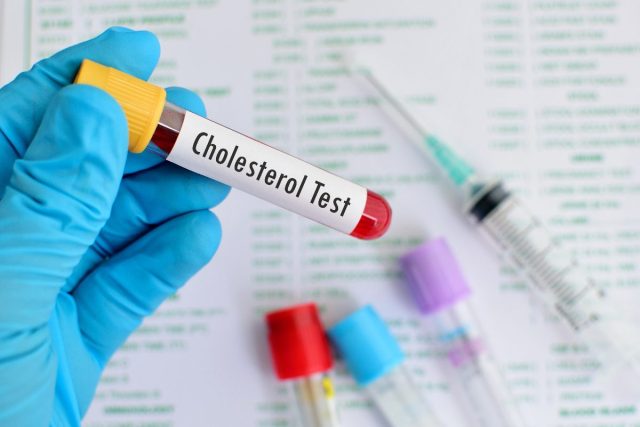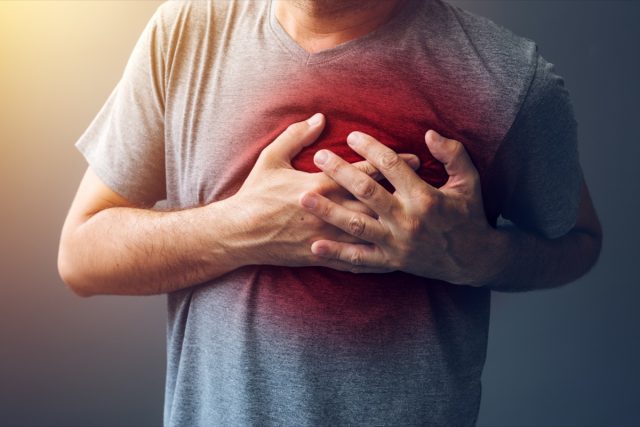Coronary artery disease is the most common type of heart disease that affects over 20 million U.S. adults, according to the Centers for Disease Control and Prevention. The condition happens when plaque buildup takes place in the walls of the arteries and blocks blood flow to the heart. Knowing the signs and how to help prevent CAD can be a matter of life or death and Eat This, Not That! Health spoke with Eric Stahl, MD Non-Invasive Cardiologist at Staten Island University Hospital who shares what to know about plaque buildup and symptoms not to ignore.
Causes of Plaque Buildup

Dr. Stahl explains, "Atherosclerosis is the process by which fatty deposits or plaque buildup in the walls of arteries. As plaque builds up, the arteries harden and narrow, limiting their ability to deliver blood to different organs. Atherosclerosis is a lifelong process that starts in the second and third decade of life and is most impacted by high cholesterol, high blood pressure, smoking and diabetes. Limiting these risk factors is the best way to prevent atherosclerosis."
Healthy Lifestyle Choices Make a Difference

Dr. Stahl tells us, "Once atherosclerosis develops, lifestyle modifications can slow the progression and, in some cases, reverse it. Quitting smoking is the most important modifiable risk factor for atherosclerosis. Following a heart healthy diet, such as the Mediterranean diet, losing weight if obese, and increasing physical activity should be implemented as well. If these changes are insufficient, medications should be started to lower cholesterol and blood pressure, and treat diabetes. If left untreated, atherosclerosis can progress and lead to heart attack, stroke or peripheral artery disease (PAD)."
How to Test

"Coronary artery calcification (CAC) can be quantified by performing a non-contrast CT scan of the heart. CAC is a surrogate marker of atherosclerosis and can predict future atherosclerotic cardiovascular disease events," says Dr. Stahl.
Elevated Cholesterol Levels

According to Dr. Stahl, "Elevated cholesterol levels, particularly low-density lipoprotein (LDL), triglycerides or lipoprotein (a) directly contribute to the development of atherosclerosis. More fatty plaque will accumulate as these levels increase over time. These lab values should be checked regularly and treated if elevated."
Smoking

Dr. Stahl shares, "Many of the toxic chemicals that are inhaled with smoking contribute to atherosclerosis. Smoking is the most important modifiable risk factor of heart disease because it is well known to cause plaque buildup."
Metabolic Syndrome

Dr. Stahl says, "Metabolic syndrome and its individual components are major risk factors for the development of atherosclerosis. High cholesterol, diabetes, large waist circumference or obesity, and hypertension make up the metabolic syndrome. If present, atherosclerosis develops more rapidly."
Chest Pain

Dr. Stahl states, "When atherosclerosis progresses and the arteries narrow, people will eventually start to feel symptomatic. Chest pain, shortness of breath, and fatigue are symptoms that indicate significant narrowing of their coronary arteries."
Atherosclerosis

"Atherosclerosis does not only affect certain areas of the body," Dr. Stahl reveals. "If there is evidence of buildup in one area, atherosclerosis has developed throughout the body. For this reason, those who have had a previous stroke or have carotid stenosis or peripheral arterial disease, are at increased risk for having a heart attack."
No comments:
Post a Comment